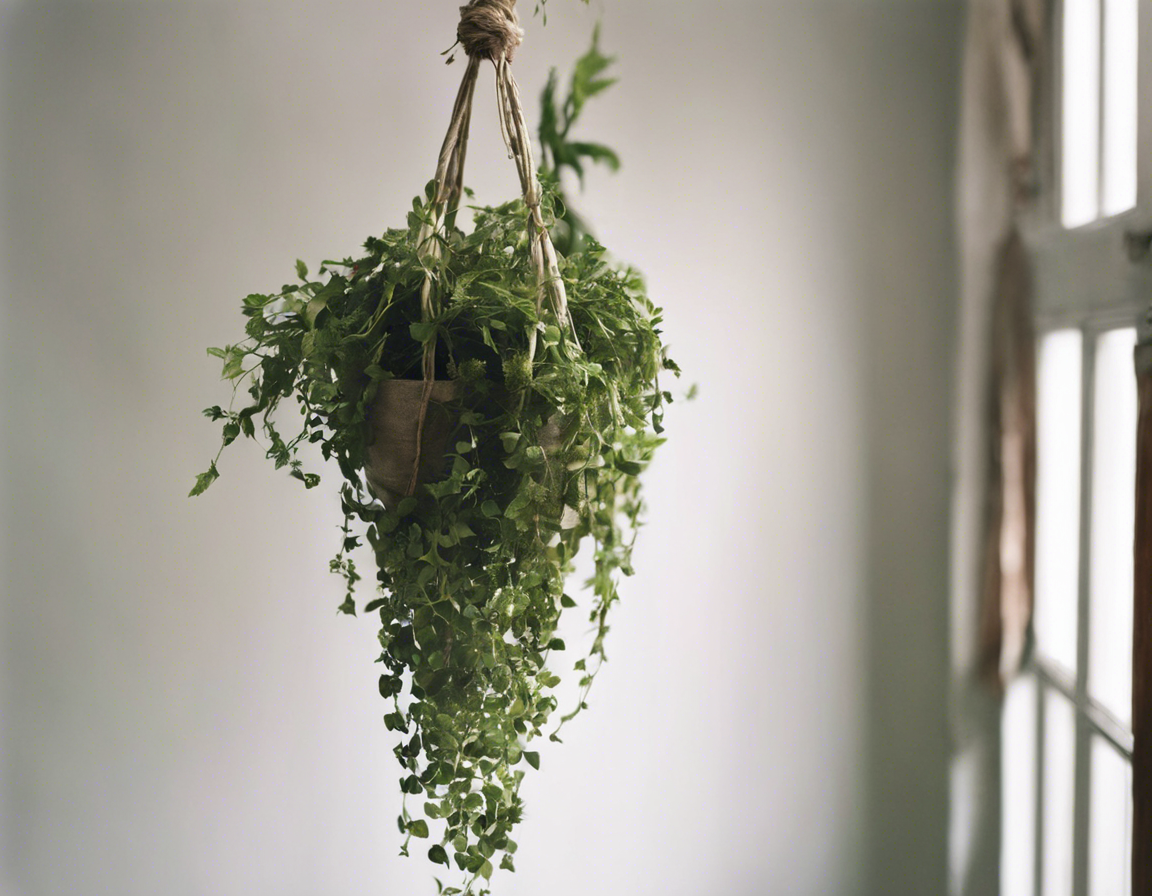Introduction
Drying plants, whether it’s herbs, flowers, or fruits, is a time-honored method of preserving nature’s bounty for future use. Hanging plants to dry is a traditional approach that is simple, effective, and yields excellent results if done correctly. This article will guide you through the process of drying plants by hanging, providing you with the knowledge and techniques needed to ensure successful preservation of your botanical treasures.
Choosing the Right Plants for Drying
Before diving into the drying process, it’s essential to choose the right plants for drying. Not all plants are suitable for drying, as some may lose their color, aroma, or flavor during the drying process. Herbs such as lavender, rosemary, thyme, and mint are popular choices for drying due to their intense scents and flavors. Flowers like roses, hydrangeas, and sunflowers can also be dried for decorative purposes. Fruits such as apples, berries, and citrus fruits can be dried for snacks or culinary use.
Harvesting the Plants
The timing of harvest plays a crucial role in the quality of the dried plants. For herbs, it’s best to harvest them before they flower, as this is when their essential oils are most concentrated. Flowers should be harvested when they are fully bloomed but not wilting. Fruits should be ripe but not overripe. It’s recommended to harvest plants in the morning when their moisture content is the lowest.
Preparing the Plants for Drying
Once you have harvested your plants, it’s important to prepare them for drying. Remove any damaged or discolored parts, as they can affect the quality of the dried plants. If you’re drying herbs or flowers with long stems, bundle them together using twine or rubber bands. For fruits, slice them uniformly to ensure even drying.
Hanging the Plants
Hanging plants to dry is a simple and effective method that allows for good air circulation, which is crucial for the drying process. Choose a well-ventilated area that is away from direct sunlight to hang your plants. Hanging racks or drying screens are ideal for this purpose. Make sure to space out the plants to prevent them from touching each other, as this can lead to mold growth.
Monitoring the Drying Process
Check on your plants regularly during the drying process to ensure that everything is drying properly. Depending on the plant type and environmental conditions, drying can take anywhere from a few days to a few weeks. Plants are ready when they are completely dry to the touch and retain their color and aroma. Herbs should crumble easily, flowers should be stiff and papery, and fruits should be pliable but not sticky.
Storing the Dried Plants
Once your plants are fully dried, it’s time to store them properly to maintain their quality. Place them in airtight containers such as glass jars or plastic bags, and store them in a cool, dark place away from moisture and sunlight. Label the containers with the plant type and date of drying for easy identification.
Uses for Dried Plants
Dried plants have a wide range of uses, from culinary to decorative and even medicinal. Herbs can be used in cooking, teas, and homemade beauty products. Flowers make beautiful additions to crafts, potpourri, and floral arrangements. Fruits can be enjoyed as healthy snacks or used in baking and cooking. Get creative and explore the versatile world of dried plants!
Frequently Asked Questions (FAQs)
1. Can I dry plants in the microwave or oven?
While it’s possible to dry plants in the microwave or oven, these methods can be tricky and may result in uneven drying or loss of quality. Hanging plants to dry is a more traditional and reliable method that yields better results.
2. How do I prevent mold growth during the drying process?
To prevent mold growth, make sure your plants are properly spaced out during drying to allow for good air circulation. Check the plants regularly for any signs of mold and discard any that show mold growth.
3. What is the best time of day to harvest plants for drying?
The best time to harvest plants for drying is in the morning when their moisture content is the lowest. This helps preserve the plants’ essential oils and flavors during the drying process.
4. Can I dry plants in a humid environment?
Drying plants in a humid environment can be challenging, as the excess moisture in the air can hinder the drying process. It’s best to choose a well-ventilated area with low humidity for optimal drying results.
5. How long can I store dried plants?
Properly dried and stored plants can last for several months to a year, depending on the plant type and storage conditions. Make sure to check for any signs of moisture or mold during storage and discard any spoiled plants.
In conclusion, hanging plants to dry is a rewarding and practical way to preserve your botanical treasures for future use. By following the steps outlined in this article and paying attention to the details, you can enjoy a bountiful supply of dried herbs, flowers, and fruits throughout the year. Experiment with different plant varieties and create your own unique blends for culinary, decorative, and aromatic purposes. Happy drying!
